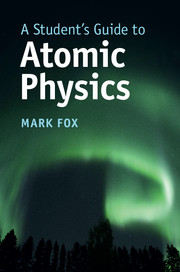Undergraduate students come across the concepts of atomic physics at various stages during their degree programs. For example, the Bohr model is a central part of introductory courses on quantum physics, while the hydrogen atom is a key element in a first course on quantum mechanics. After that, the more advanced topics could either be a component of a second, broad quantum physics module, or a stand-alone unit. This book is designed for the latter approach, without necessarily excluding its usefulness for the former, where it might be used, for example, in conjunction with a text on nuclear physics.
The book evolved from a detailed set of lecture notes prepared for a thirdyear module at the University of Sheffield. The notes were prepared to respond to the lack of a short text at the right level. The subject material was either scattered across various chapters of large quantum physics texts, or was included in introductory sections of more advanced texts. Neither case was particularly suited to the needs of the students.
The range of topics included within the book aims to cover the core curriculum on atomic physics set out by the Institute of Physics, and might be useful either to second- or third-year students within the United Kingdom, depending on how a particular university subdivides the syllabus. For readers outside the United Kingdom, the text is pitched at intermediate-level students. It assumes basic familiarity with the techniques of quantum mechanics, but does not have the depth required for masters-level courses.
The course notes have been freely available on the Internet for several years, and I was approached by several publishers who thought they could form the basis for a textbook. Having already written two textbooks, I was well aware of the extra effort required to turn a set of lecture notes into a book and resisted the approaches I received. However, I then discovered the Cambridge Student's Guide series, and realized that it is the right place for the material. Its inclusion within the series makes it clear that the book does not claim to be an authoritative reference work, but rather an intermediate-level text aimed at explaining the basic concepts to undergraduate students.
